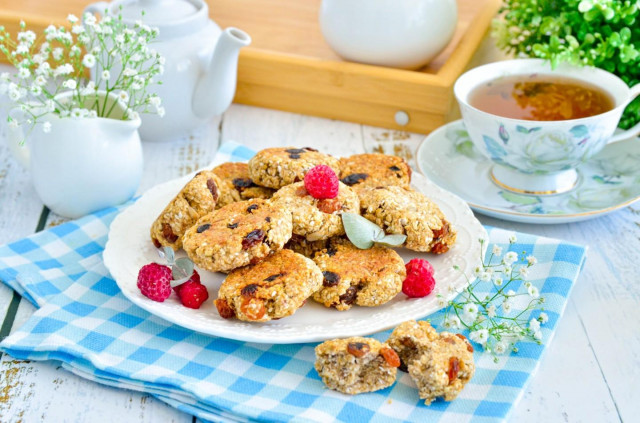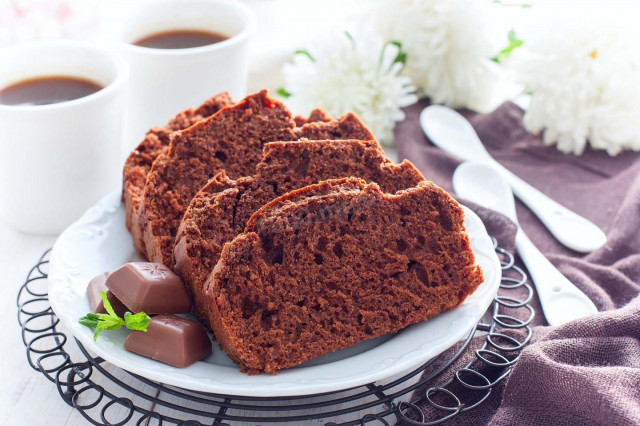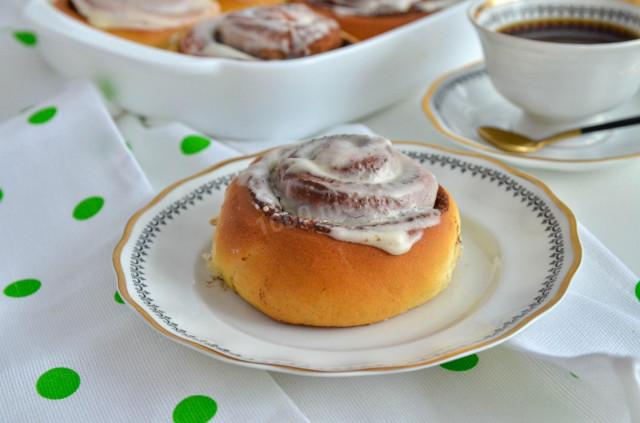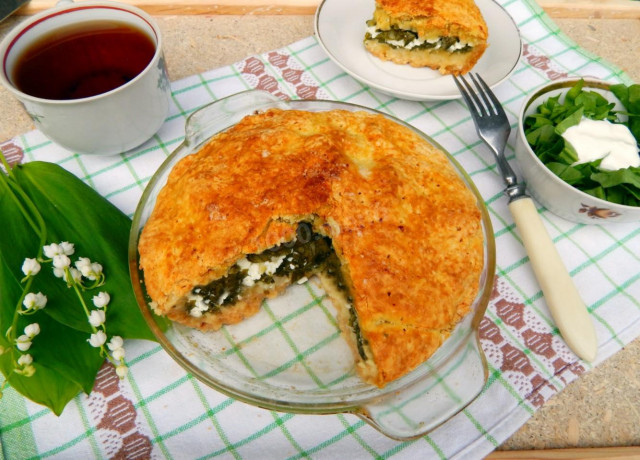Composition / ingredients
Step-by-step cooking
Step 1:
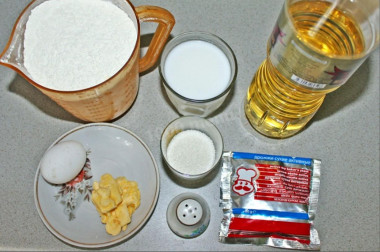
How to bake sugar buns? Prepare the necessary ingredients. Take high-quality wheat flour of the highest grade. The quality of baking will largely depend on this. When buying dry yeast, read the instructions. The active type of yeast must first be diluted in a warm liquid. Instant dry yeast is added directly to the dough.
Step 2:

To start, put the sourdough. Pour the active dry yeast with warm milk, add 1 tablespoon of sugar, mix and leave in a warm place for 15-20 minutes. During this time, the sponge will rise and a foam cap will form on the surface.
Step 3:
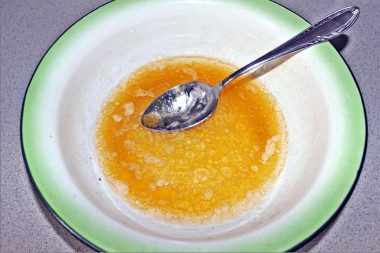
In a separate container, stir the egg, sugar, salt. Pour in the refined sunflower oil and mix.
Step 4:

Pour the sourdough into a bowl with the egg mixture, mix. Sift the flour to make the pastry more airy, add and knead a soft, elastic, non-sticky dough.
Step 5:
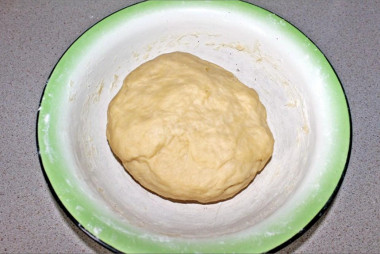
Cover the dough with a kitchen towel and leave in a warm place to rise. You can put it in the oven, preheated at 30-40 degrees. When the volume of the dough increases by 2-3 times, it needs to be kneaded to expel carbon dioxide, which prevents the fermentation process. Now you can form buns.
Step 6:
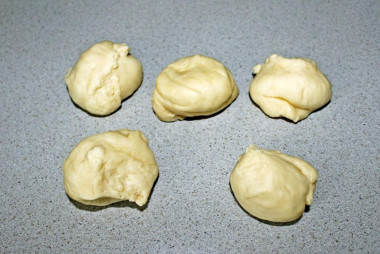
Sprinkle the work surface with flour. Lay out the dough. Divide it into balls the size of a tangerine.
Step 7:
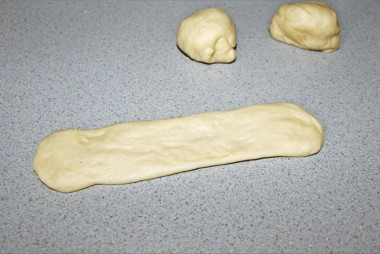
Roll out each ball into an elongated rectangle (about 3 mm thick).
Step 8:

Grease the surface with butter melted in the microwave or in a water bath.
Step 9:

Sprinkle evenly with sugar. For flavor, white sugar can be mixed with 2 teaspoons of vanilla sugar or replaced with cane sugar, then the taste and aroma of baking will become caramel.
Step 10:

Roll the rectangle into a roll.
Step 11:

Make a transverse incision, not reaching the end by 1 cm .
Step 12:
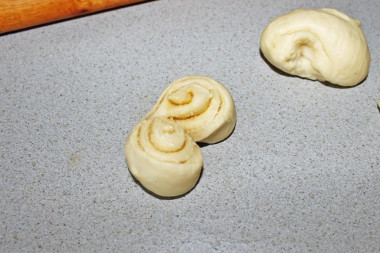
Turn out the bun (as shown in the photo). Do these manipulations with the rest of the dough balls.
Step 13:
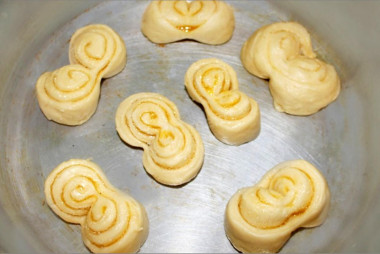
Lightly brush the baking sheet with vegetable oil. Lay out the blanks at some distance from each other, given that they will grow up when baking. Leave the baking sheet with the buns in a warm place for 15 minutes to proofing. Then send it to a preheated (10-20 minutes) 180 degree oven. Bake for about 15-20 minutes, focusing on the features of your technique.
Step 14:

When the buns are browned, check them for readiness: pierce them with a wooden skewer in several places, if the skewer comes out dry, then the baking sheet can be taken out of the oven. For shine, lubricate the finished buns with sweet water. To do this, in a small container, dilute sugar (3 teaspoons) in boiled water (1/8 cup).
Step 15:
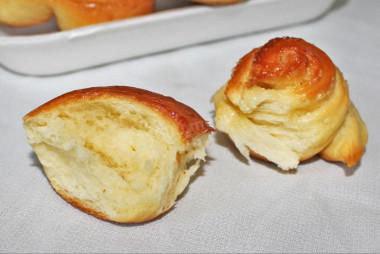
Delicious, airy buns are ready. Brew tea and help yourself. Enjoy your meal!
The liquid in which yeast is bred should be pleasant to the touch, no higher than 40 degrees. Why is this important? In a warm environment, yeast is well activated, in a hot one it will die, and in a cold one it simply will not work. To avoid unpleasant surprises, check the yeast before mixing with the rest of the ingredients. Pour a little warm milk into a bowl, stir in the yeast. Cover the bowl with a kitchen towel and put it in a warm place without drafts for 10-15 minutes. During this time, a foam yeast cap should appear on the surface of the sponge. If this did not happen, then the fermentation process has not started (the yeast is overdue or spoiled). In this case, it is worth taking other yeast, otherwise baking will not work.
Be prepared for the fact that flour may need more or less than indicated in the recipe. Focus not on the amount of flour, but on the desired consistency of the dough. Read a lot of useful information about flour and its properties in this article!
Butter can be melted in the microwave in the appropriate mode (read the instructions for your device) or in a water bath. How to melt butter in a water bath? You will need two containers of different diameters. Pour water into a large one and put it on the stove. Place the smaller container on top so that it is submerged in water by about half. Put the sliced butter into it. Under the influence of boiling water, the oil will begin to melt. Stir the oil slightly to speed up the process. As soon as the pieces of oil are completely dissolved, remove the container from the stove.
Keep in mind that everyone's ovens are different. The temperature and cooking time may differ from those specified in the recipe. To make any baked dish successful, use useful information in this article !
Dry yeast can be replaced with fresh pressed yeast, based on the proportion of 1:3. That is, for 1 gram of dry yeast required by the recipe, you need to take 3 grams of fresh.
Caloric content of the products possible in the composition of the dish
- Whole cow's milk - 68 kcal/100g
- Milk 3.5% fat content - 64 kcal/100g
- Milk 3.2% fat content - 60 kcal/100g
- Milk 1.5% fat content - 47 kcal/100g
- Concentrated milk 7.5% fat content - 140 kcal/100g
- Milk 2.5% fat content - 54 kcal/100g
- Chicken egg - 157 kcal/100g
- Egg white - 45 kcal/100g
- Egg powder - 542 kcal/100g
- Egg yolk - 352 kcal/100g
- Ostrich egg - 118 kcal/100g
- Pressed yeast - 109 kcal/100g
- Whole durum wheat flour fortified - 333 kcal/100g
- Whole durum wheat flour, universal - 364 kcal/100g
- Flour krupchatka - 348 kcal/100g
- Flour - 325 kcal/100g
- Granulated sugar - 398 kcal/100g
- Sugar - 398 kcal/100g
- Butter 82% - 734 kcal/100g
- Amateur unsalted butter - 709 kcal/100g
- Unsalted peasant butter - 661 kcal/100g
- Peasant salted butter - 652 kcal/100g
- Melted butter - 869 kcal/100g
- Salt - 0 kcal/100g
- Sunflower oil - 898 kcal/100g
- Refined sunflower oil - 899 kcal/100g


